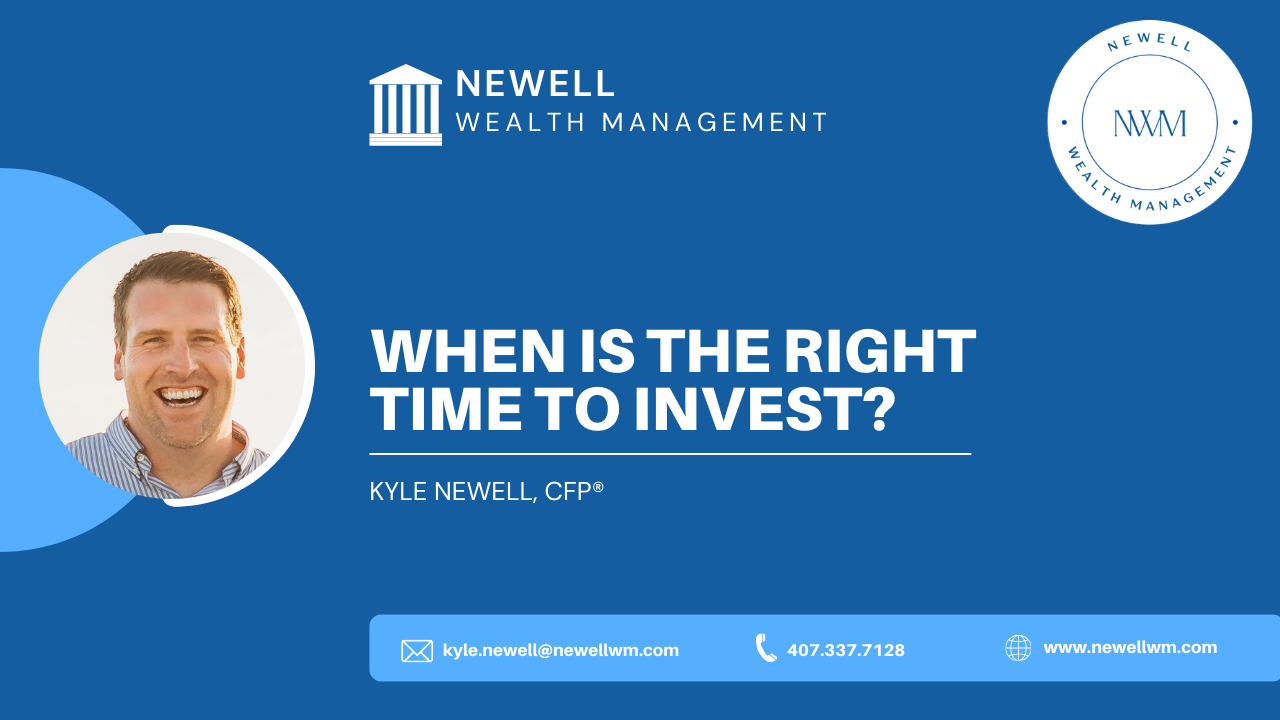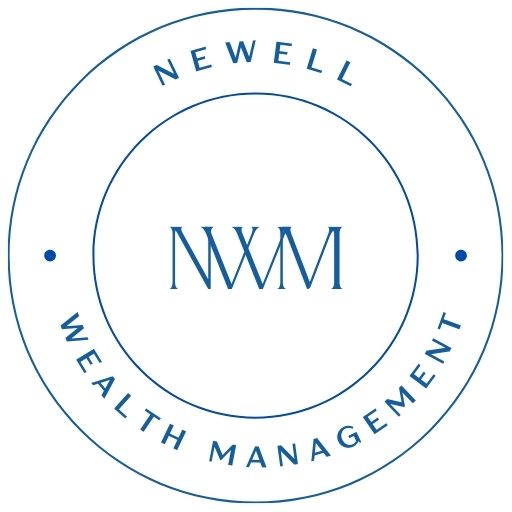When is the Right Time to Invest?

It’s safe to say we all have heard the saying, “Timing is everything.” This advice applies to many things, especially those that require patience. Is the same true for investing? When is the right time to invest? While it seems like a simple question, the answer isn’t as straightforward.
This article will examine three factors that may help you determine the right time to invest.
- Purpose
- Timeframe
- Risk-Return
There is no one-size-fits-all approach to financial planning and investing. Still, one of the most frequent questions I get is about knowing when the right time to invest is. This question often arises when people have some windfall or extra cash. You may have
- Been paid a bonus
- Gotten some stock money
- Received an inheritance
You know you need to be smart with the funds and prudent about investing. It makes sense that the next logical question is whether it’s the right time to invest. Before we dive in, let’s start with a real-life example.

Meet Larry
I first met with a gentleman around 2010 who was getting closer to retirement. To protect his privacy, we’ll call him “Larry.”
Larry had delayed retiring due to the stock market crash in 2008, which was an eye-opening moment for many people. The stock market lost from high to low over a 14 to 18-month period, almost 50% in value.
For example’s sake, let’s put some dollars into this. Suppose you had a million dollars in the stock market in late 2007. By early 2009, you would have half a million dollars. Half of the value would have evaporated. We know investments are not guaranteed. The market value will (and often does) fluctuate.
Tip: When investing, it’s healthier to consider the number of shares or units you own rather than their daily or monthly value.
Let’s get back to Larry. Larry is a smart guy and a hard worker. Around 2008, he sold at or near the bottom and just sat in cash for the next several years. After facing the emotional shock of losing a significant amount of money, he came to me to figure out how to reinvest his money so he could retire and start getting a better bang for his buck.
When he came to me in 2010, he was sitting in cash. You may remember that at that time, cash was earning almost nothing. You may have gotten 1 to 2% if you locked it up in a CD for three to five years. His cash was earning the smallest amount and barely keeping up with or even losing with inflation.
As we talked, he kept asking whether it was the right time to invest. He was paralyzed by the heavy losses of 2008 and the big, worrisome event of a potential government shutdown. He was terrified of making the wrong decision about when the right time to invest his money would be.
Larry is just one of many examples I have seen in my professional career.

Yogi Berra was a wise man. He said knowing precisely what will happen, even if there’s some sort of major worrisome event on the horizon, is impossible. Every year since the beginning of history, there have been things, news, and events that are scary and worrisome. The problem is that humans have shown that we are horrible at predicting the future.
To help with that, let’s dive into the three areas you should consider when investing money.
What’s the Purpose of the Money?
Ask yourself a couple of questions.
- Do you have a defined goal for the money?
- What are you planning on using the money for?
No Defined Plans
If there is no defined goal or purpose for the money, and it’s just something that may be in the future, that’s okay. That tells me you don’t need the money anytime soon. You can take the bigger pot of money and define an amount to set aside that makes you feel comfortable in case the world goes to “hell in a handbasket,” as the saying goes. You can invest the rest in a longer-term picture.
This would give you some cash on hand that you could live off of for however many months or years would make you comfortable. I’ve had some clients whose numbers have been as high as two or three years’ worth of cash or cash equivalents in a separate kind of safe account. It’s not earning much, but it’s what I like to call “sleep at night” or “rest easy” money.
Defined Goals
Goals are individual. You may still be working but are close to retiring. Maybe you’re five to ten years away from retirement, but want to be sure you can retire when you want to. Other financial goals could be to
- Buy a vacation home
- Leave an inheritance
- Pay for college
- Cover long-term care costs
- Give to charitable organizations
There are many things that you can use your money for. The point is that it’s important to assign some goal to the value because that helps give clarity around the money. This is much better than watching the money go up and down and your emotions along with it.
What’s Your Timeframe?
Once you have a defined purpose for your money, whether specific or to set aside, you need to determine your timing.
- Will it be next year?
- Three years from now?
- 20 years or more?
Even if you don’t have a set purpose, you should still be a good steward of your resources so your money grows for the future. To do that, you still need to understand the time frame. I like to use five-plus years as a starting point.
There is a lot of research out there that shows the stock market’s historical patterns over a specific period of time. This gives us an appropriate timeframe and an understanding of potential outcomes when investing.
While we cannot predict the future, we can understand what has happened historically over the past 100-plus years of the market. This historical data can help us make educated guesses about how much time we have and how long it may take to regain the value of your investment should things not go how we want them to.
Why five-plus?
If you’re invested over a five-year period, there might be only a few times over the past 100 years, like the Great Depression or the early 2000s, when you would have lost money over a five-year rolling period.
Historically, five-year rolling periods have higher odds of making money than losing. If you’re invested in the stock market, you could potentially be earning double-digit returns. For example, the chances of winning could be more significant, maybe 97 to 98% versus 2%. You may have one or two years that may be down, but understanding the timeframe will help calm your nerves and help you focus on the longer term.
Tip: The right time to invest is about understanding the prospect of earning versus losing over a specific timeframe.
Risk-Return
Every investment has risks. Understanding the expected risk-return ratio of investments you may be considering is essential. We want to ask a few questions.
- What is the risk-return ratio?
- Where could it go wrong?
- How would it go bad?
- What’s the potential return?
Now ask yourself:
Is that a risk-return trade-off that you’re willing to take?
If you want to invest in a more risky asset that may offer higher returns, you will also have more potential risk. The right time to invest, now or in the future, is often associated with the risk-return trade-off.
The investment strategy you choose doesn’t have to involve individual stocks. There is a broad spectrum of options, ranging from very aggressive to very conservative and everything in between. Knowing the risk-return ratio for various investments may help give you some peace about when the right time to invest may be for you.
For example, if you don’t need it for 10 years, you may feel comfortable investing the money now. As long as you understand the ebbs and flows of investing and make informed risk-return trade-offs, you can better ease your mind about investing.
The only way to know for sure if it’s the right time to invest is to actually do it and then review your decision.
Think about all the times in your life when you said things like:
- I thought of the idea years ago.
- I should have done this or that.
- I wish I would have acted on (fill in the blank).
We have all had times when we thought about something but didn’t take action and missed out. Missing out is certainly a possibility when it comes to investing.

If you want to invest money and think it’s prudent to do so, given the constraints you have placed on it, now is probably the right time to invest.
Key Points
Investments can go down, sometimes harshly, but historically, they increase over time. Here are a few key tips to help you determine when the right time to invest may be.
- When investing, it’s healthier to consider the number of shares or units you own rather than their daily or monthly value.
- Ease your mind by expanding your view from looking at short-term performance to a five-year or longer window.
- The right time to invest is about understanding the prospect of earning versus losing over a specific timeframe.
There is no universal answer to the question of when the right time to invest is. The only way to know is to take action and review the results.
Important Information
Newell Wealth Management, LLC (“NWM”) is a registered investment advisor offering advisory services in the State of FL and in other jurisdictions where exempted. Registration does not imply a certain level of skill or training. The presence of this website on the Internet shall not be directly or indirectly interpreted as a solicitation of investment advisory services to persons of another jurisdiction unless otherwise permitted by statute. Follow-up or individualized responses to consumers in a particular state by NWM in the rendering of personalized investment advice for compensation shall not be made without our first complying with jurisdiction requirements or pursuant an applicable state exemption.
All written content on this site is for information purposes only and is not intended to provide specific advice or recommendations for any individual. Opinions expressed herein are solely those of NWM, unless otherwise specifically cited. Kyle Newell and NWM are neither an attorney nor an accountant, and no portion of this website content should be interpreted as legal, accounting or tax advice. Material presented is believed to be from reliable sources and no representations are made by our firm as to other parties’ informational accuracy or completeness. There is no assurance that the views or strategies discussed are suitable for all investors or will yield positive outcomes. Investment involves risks including possible loss of principal and unless otherwise stated, are not guaranteed. Any economic forecasts set forth may not develop as predicted and are subject to change. All information or ideas provided should be discussed in detail with an advisor, accountant or legal counsel prior to implementation.
